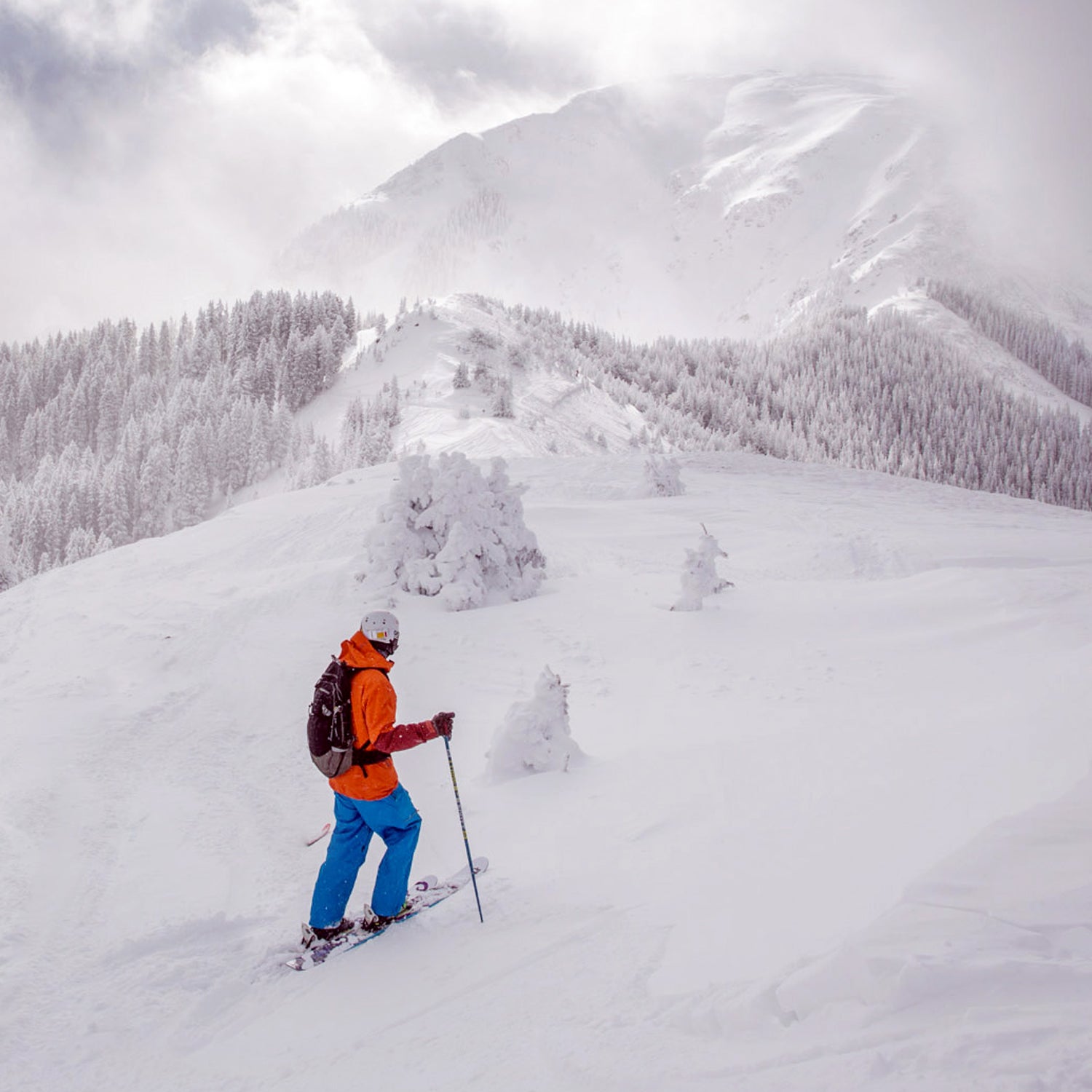When the new opens at this season, inbound skiers and riders will gain access to prime terrain once reserved only for those willing to hike to the top. The triple chair will whisk people up to 12,450 feet, just shy of the Kachina Peak summit, increasing Taos’ advanced and expert lift-serviced terrain by 50 percent.
“Kachina offers an adventure similar to backcountry skiing and riding, and we know many of our visitors are actively seeking more of that type of experience,” says Jesse Keaveny, chief marketing officer for Taos Ski Valley. “By adding the lift, we provide snowsports enthusiasts that thrill of untamed expert terrain, but in a more accessible—and controlled—way.”
Taos isn’t the only resort trying to bring backcountry-like experiences to its customers. According to data, inbound snowsports visits dropped almost 10 percent from 2010/11 to 2013/14. While back-to-back dismal snow years in some regions (looking at you, California) take some of the blame, the improved performance of backcountry gear has allowed more skiers and riders to feed their stoke beyond resort boundaries. Backcountry gear sales have jumped nearly eight percent since 2011/12 and sales of hybrid alpine/AT boots have quintupled during the last four years, according to . “Backcountry skiing is the market segment that’s the shining star right now,” says Jonathan Lantz, president of La Sportiva.
New ski technology has made skiing tough backcountry lines easier. “An intermediate skier can do stuff a lot of experts couldn’t do 30 years ago,” says Kelly Davis, director of research at SIA.
Ski companies want to capitalize on that growth with a broad range of inbounds experiences. “Clearly that exists in the backcountry, and we want to provide that if we have the opportunity within the permitted ski area,” says NSAA President Michael Berry.
As in Taos, Jackson Hole, Wyoming, developers are also seeking to dish up more rugged terrain to their ticket holders. In the 2015/16 season, the resort will unveil its Teton Lift, a high-speed quad that will deposit skiers in the Crags area, which currently lures hikers to a series of hairy chutes among jagged rock outcroppings.
Of course, development like this often meets with disapproval from the locals. Jackson Hole veterans fear that the new lift will let powder hounds crowd the Crags area after storms. And with easier access comes the need for more safety precautions: some people worry the lift will entice more people to Granite Canyon, a gnarly, avalanche-prone backcountry area that will be visible from the top of the chair. To deter skiers from ducking the ropes, Jackson Hole will post staff along the boundary.
Colorado’s Arapahoe Basin is also expanding, but it’s taking a different approach to out-of-bounds avalanche concerns. A-Basin estimates that 15,000 to 20,000 people per year hop a ride on the resort’s lifts to access The Beavers, a 434-acre range of chutes and steep trees currently outside the resort’s boundaries. A Beavers run ends with a 15-minute hike to the highway, followed by thumbing a ride back to the resort’s base. A-Basin plans to expand to include The Beavers, in part so it can keep tabs on people using the area. Vice President and COO Alan Henceroth expects that bringing The Beavers inbounds will feed the hunger for challenging skiing, and enable the resort to implement an avalanche mitigation plan in the area. “It’s functioning like a lift-served area now, but there’s significant avalanche concern out there,” says Henceroth.
The end result will likely be better skiing—and more of it—for resort-bound skiers. Take Jim Kandolin, a Jackson Hole guide, who thinks the new development is all for the best. “A good powder skier knows how to find good snow no matter what,” he says. “At the end of the day, it’s giving us a bigger canvas for skiing.”


